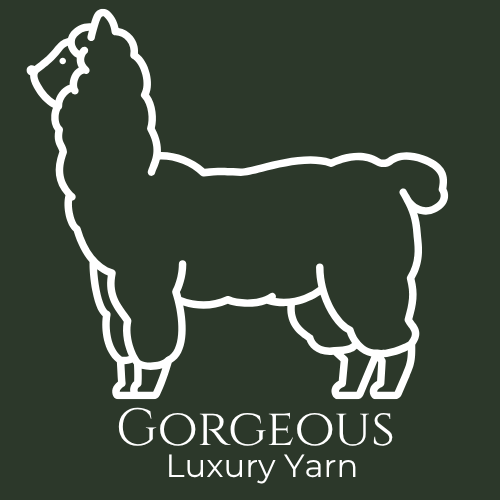
Alpaca Wool vs Other Yarns: The Complete Guide for Knitters & Crocheters
Share
Choosing the perfect yarn can make or break your knitting or crochet project. With so many fibres to pick from—alpaca, sheep’s wool, cotton, bamboo, linen, and even acrylic—it’s easy to feel overwhelmed. Each brings its own strengths (and quirks!), so how do you decide? This guide will help you compare the most popular yarn types side by side, so you can choose the right fibre for your next project with confidence.
So, what makes alpaca yarn stand out—and when might another yarn be the better choice? Let’s take a closer look.

1. 🦙 Alpaca
Alpaca wool is often described as luxury you can wear every day. Soft, silky, and naturally hypoallergenic, it’s loved by crrafters who value both comfort and sustainability.
Key features
- It is the most enviro-friendly animal fibre - see more details on this here.
- Exceptionally soft—often compared to cashmere.
- Hollow breathable fibres makes it warmer yet lighter than sheep’s wool.
- Naturally hypoallergenic (no lanolin, so gentle on sensitive skin).
- Strong and durable fibres, less likely to pill.
- Water- and odour-resistant.
- Generally farmed in smaller herd numbers.
Best for
garments worn next to the skin (scarves, hats, jumpers), special heirloom pieces, and anyone who wants to knit with a fibre that feels indulgent but practical.
Did you know?
🦙
Alpacas were first domesticated in the Andes over 6,000 years ago and were once prized by Incan royalty for their silky fleece..👸
2. 🐑 Sheep
Sheep’s wool is the most common natural yarn fibre, and for good reason—it’s versatile, accessible, and comes in many varieties. From fine merino to hardy Shetland, there’s a sheep’s wool for almost every project.
Key features
- Naturally warm and elastic
- Wide range of textures, from soft to rustic
- Contains lanolin, which can be soothing for some but irritating for others
- More prone to felting than alpaca
- Often more affordable
Best for
hard-wearing garments like socks, jumpers, and outerwear; projects where structure and elasticity are important.
Did you know?
🐑
Sheep were primarily raised for meat, milk, and skins. Selective breeding for woolly sheep emerged around BCE 6,000, and wool production became a significant industry.
3. 🌿Plant-Based Yarns (Cotton, Bamboo, Linen)
Plant fibres offer a breathable, lightweight alternative to animal fibres, and they’re especially popular for summer projects or for makers avoiding animal products.
Key features
- Cotton: soft, durable, machine-washable, but can feel heavy and lacks stretch
- Bamboo: silky with a lovely drape, but less hard-wearing over time
- Linen: strong, crisp, and gets softer with washing, ideal for warm-weather wear
Best for
Llight-weight summer tops, dishcloths, bags, and projects where breathability matters.
Did you know?
🌿
Linen was popular for many hundreds of years as it is sourced from flax, which can be grown easily. The flax-to-linen industry virtually died out because cotton can be processed much cheaply. BUT cotton uses a lot more water than linen, and linen is now making a come-back.
Here at Gorgeous Alpacas we are currently experimenting with growing our own flax to process into linen.
4. 🙅 Acrylic Yarn
Acrylic is a synthetic fibre made from petroleum-based products. While it doesn’t have the natural feel of alpaca or wool, it remains popular for its low cost and easy care.
Key features
- Affordable and widely available
- Machine-washable and non-allergenic
- Holds colour well
- Less breathable and less warm than natural fibres
- Can feel squeaky or less pleasant to work with
- Not biodegradable, so less eco-friendly
Best for
Beginners practising stitches, budget-friendly projects, or items that need frequent washing (like children’s clothes or blankets).
Did you know?
🙅
Acrylic fibres were first developed and commercially produced in the mid-20th century by Courtaulds, a British company.
Final Thoughts
No yarn is truly ‘better’ than another—it’s all about matching the fibre to your project and what you value most: softness, durability, eco-friendliness, or cost. That said, alpaca offers something special: it’s warm yet breathable, luxurious yet practical, and deeply sustainable. If you’ve never tried it before, now’s the perfect time to discover why so many knitters and crocheters fall in love with alpaca yarn.


